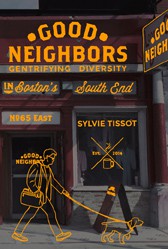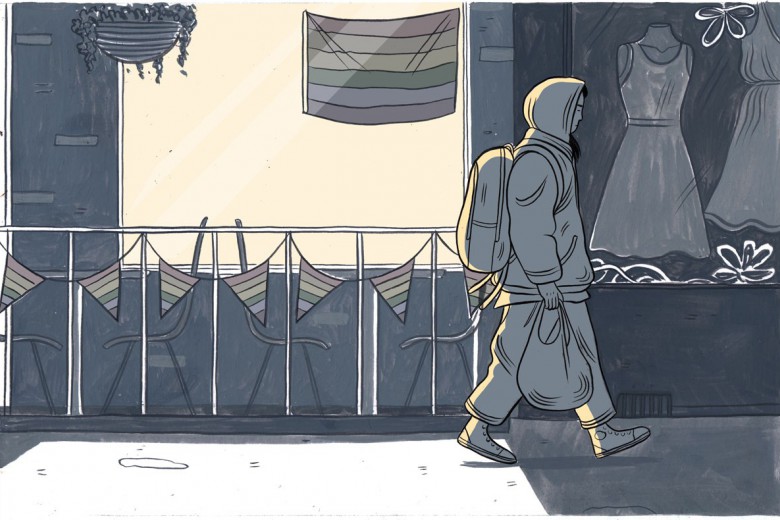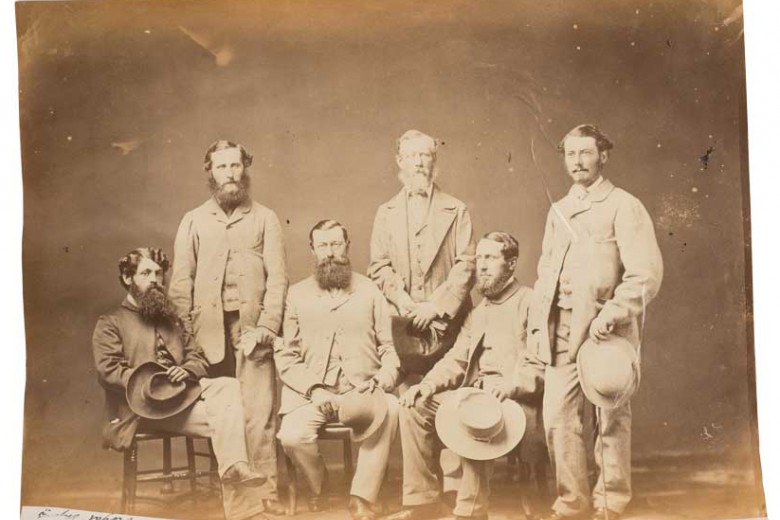
Good Neighbors: Gentrifying Diversity in Boston’s South End
By Sylvie Tissot
Verso, 2015
Gentrification is the displacement of poor and often racialized residents from a historically working-class neighbourhood. Some argue that gentrification is a necessary shift to “improve” the capitalist housing market; others, critics, understand the process to be driven by the increased presence of businesses and cultural establishments that cater exclusively to the privileged demands of mostly white newcomers who push out (and price out) the working-class residents.
Sylvie Tissot’s Good Neighbors: Gentrifying Diversity in Boston’s South End offers a third view of gentrification: she argues that it is neither a cultural phenomenon nor an automatic process predetermined by the logic of capitalism. Rather, it is a contingent outcome of gentrifiers’ successful class mobilization – their ability to organize neighbourhood power to defeat the interests of their working-class opponents.
According to Tissot, what is now known as gentrification began as resistance to urban renewal. In a process dubbed “slum clearance” in the postwar period, cities across the United States aggressively demolished working-class neighbourhoods, forcing targeted residents to relocate to make room for highways and other infrastructure.
Activists like Jane Jacobs criticized the authoritarianism of urban renewal policies and the cultural homogeneity of suburbs, favouring democratic city planning and more “mixed” urban neighbourhoods. Meanwhile, grassroots organizations embraced direct action and the radical politics of the Black Power movement to defend their communities from the waves of evictions and demolitions.
Tissot focuses on the gentrification of Boston’s South End, a neighbourhood historically home to immigrants from Europe, Black migrants from the southern U.S., and working-class Puerto Ricans. The Boston Redevelopment Authority’s (BRA) demolition and relocation operations ground to a halt after residents protested the plans. Under pressure, the city formed a community advisory group called the South End Project Area Committee (SEPAC) in an attempt to democratize urban redevelopment under the rubric of participatory planning. While SEPAC included white homeowners, it was led by anti-gentrification activists from Black and Puerto Rican communities, serving as a platform for working-class tenants’ struggles. It even had its own newspaper, the South End People’s News. However, working-class leadership within SEPAC could not prevent its eventual defeat.
What happened? According to Tissot, the reliance of grassroots organizations like SEPAC on external funding spurs their institutionalization and professionalization. To become eligible for funding, they collaborate with public authorities and private developers, and adopt the dominant city planning discourse. Ultimately, their professionalization leads to their depoliticization. This was SEPAC’s fate.
After the dissolution of SEPAC in 1981, activists shifted their focus from the neighbourhood level to the city and the state, and, in some cases, left the neighbourhood behind entirely to seek elected positions or university employment. Upper-class residents (architects, city planners, lawyers, and real estate developers) filled the vacuum by organizing in neighbourhood associations, affiliated businesses, and cultural groups. Having established their power base in the neighbourhood, these organizations were able to more effectively influence city hall and public affairs management, and advance their own class interests.
Liberal gentrifiers organized around the ambiguous concept of “diversity,” which allowed them to differentiate themselves from both their conservative counterparts and the radical opponents of gentrification. By positioning themselves as the happy medium, they were able to present themselves as moral models of “good neighbours,” the champions of diversity and tolerance. However, as Tissot’s account demonstrates, their advocacy of a social mix simultaneously controlled “balanced” distribution of poor residents in the neighbourhood and constructed a dichotomy between the “idle/dangerous” poor and the “deserving” poor.
Tissot also highlights the ways in which cultural tastes often associated with gentrification – heritage, chic architecture, and boutique cafés – are a product of the gentrifiers’ organized class power. For instance, Tissot highlights a campaign by the South End Historical Society to promote the neighbourhood’s Victorian architectural heritage. The aim was to increase the neighbourhood’s property value and attract real estate investment, in direct opposition to the grassroots mobilization for more public housing. A campaign to brand the South End as “historical” was followed by a similar attempt to rebrand a portion of the neighbourhood as “artistic.” Rather than encouraging actual cultural production by working-class artists, promoters (most of whom were real estate developers and business owners) profited in their own commercial interests, undermining the oppositional squatters’ movement.
Tissot’s contribution to the gentrification debate is significant because it does not force a binary choice between the cultural and the political. Gentrification is at once a cultural and political process. A working-class neighbourhood turned playground for the privileged reveals a deeper structural process. Gentrification is an outcome of struggle between organized class forces. To oppose it, grassroots organizers must rally not around abstract concepts like “diversity,” but around genuine solidarity and people’s power.






